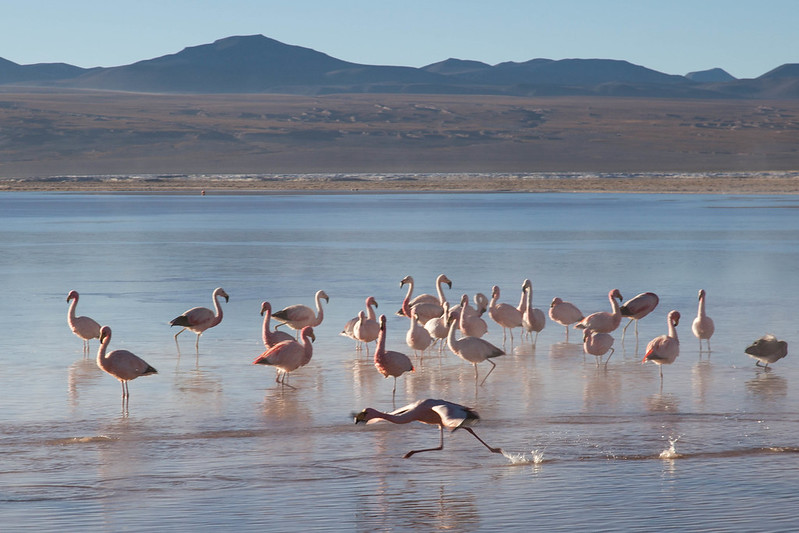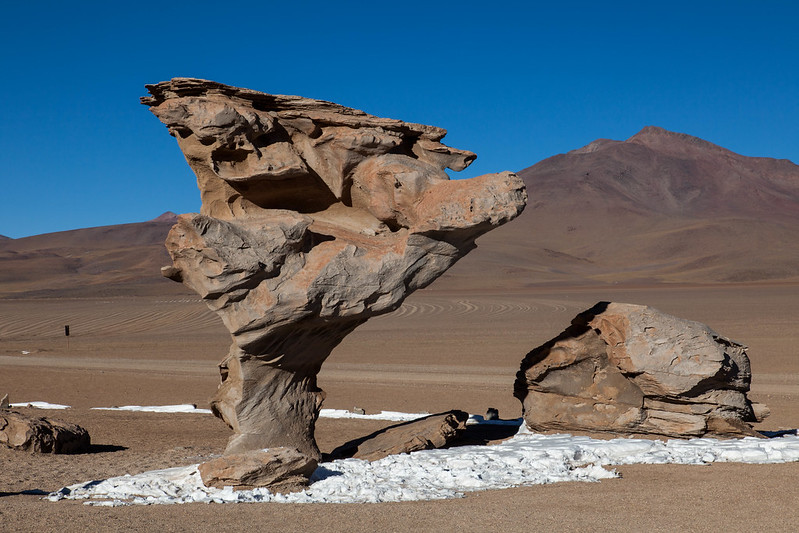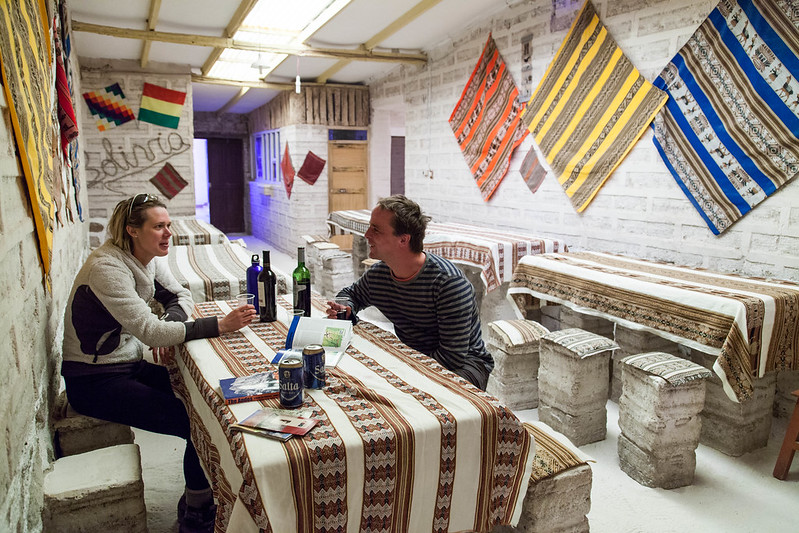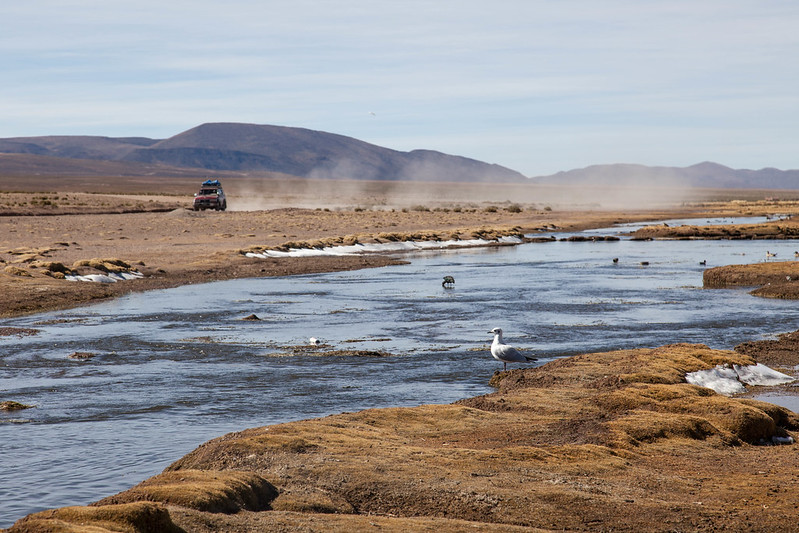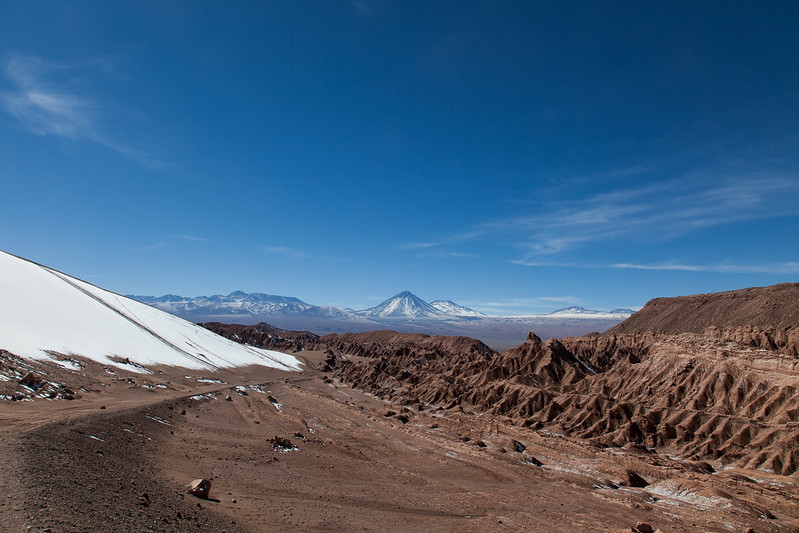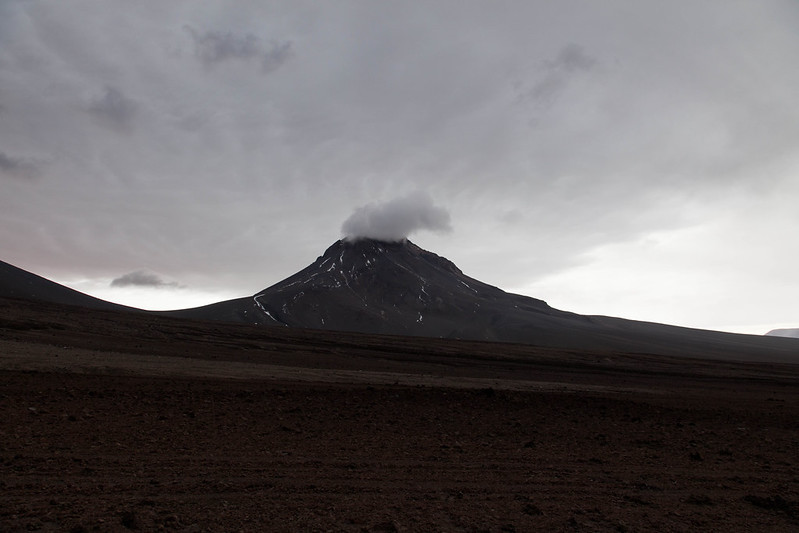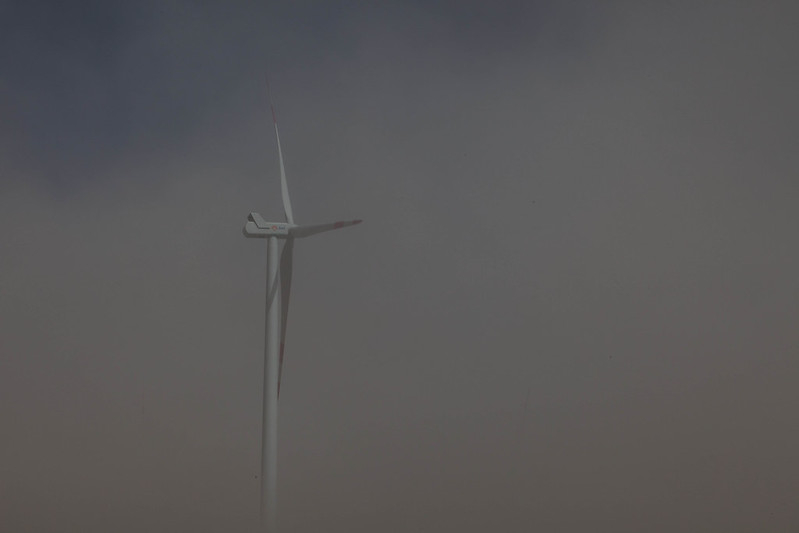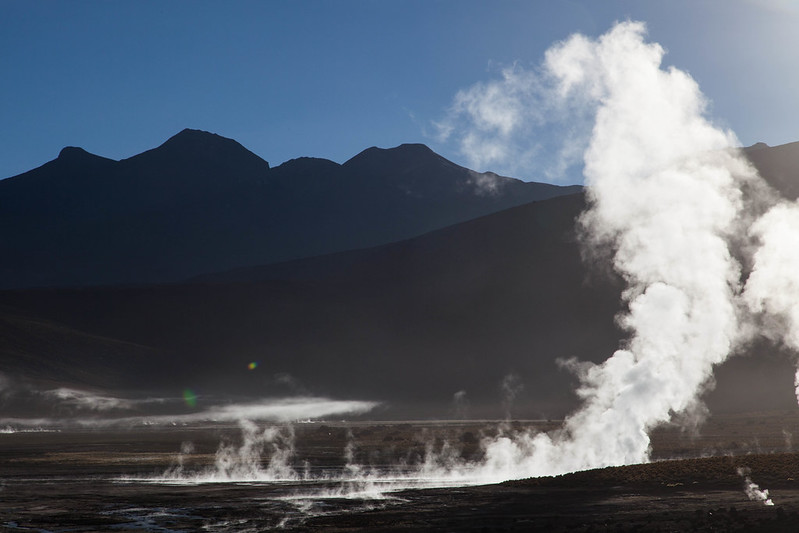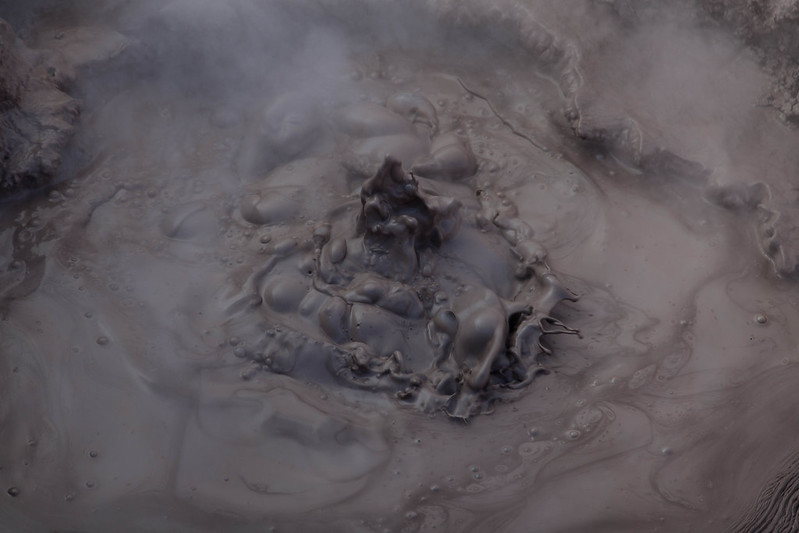 |
| Do my feet look big in these? Dinosaur footprints near Marawa. |
The centre of Sucre is beautiful: every building is white with a wooden balcony and tiled roof. Ribbons of them snake up the many hillsides on which the town is built, with cobbled streets woven into the pattern. And when I say white houses, I mean WHITE; not the greying facades of an ageing European city. Alas, there is a terrible reason for this. Bolivian towns are razed to the ground by earthquakes so regularly that white buildings lack the time to fade. Many of Sucre's colonial buildings were last destroyed in the 1940s.
 |
| Typical Sucran street view |
In the meantime, Sucre had plenty to offer. After a day around the town, we arranged a two-day trekking trip and set out with our friendly guide, David. The first couple of hours of walking took us down an Inca trail (I wonder how many of them there are in Bolivia? And what is the dollar value of being able to add the word 'Inca' in front of the word 'trail'? Substantial, surely?). The trail led down a steep hillside into the valley, where we spent a couple of hours following the river to a church. "The priest only comes here for one month a year," David told us, "so everyone has to get married or christened then." In the meantime, the eucalyptus trees preside over the site, dropping their leaves so the crops cannot grow. "It's like a plague," David told us.
 |
| Aerial view of the Marawa crater (courtesy of Google Maps) |
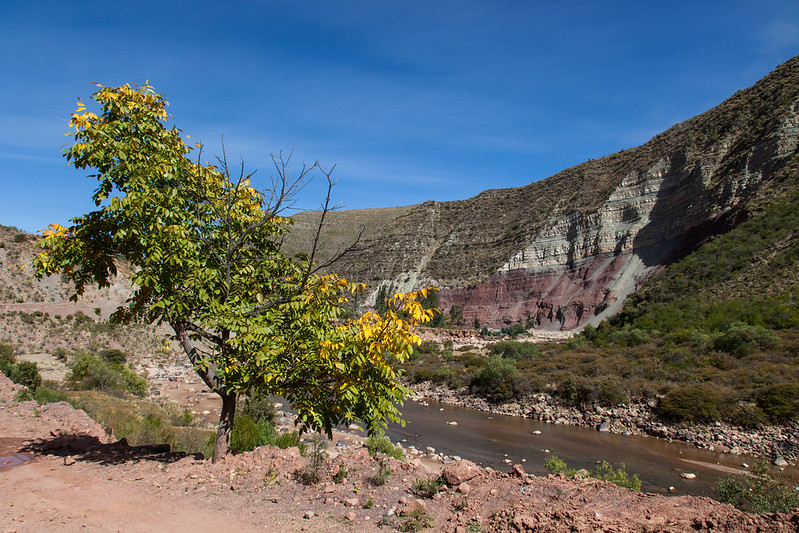 |
| Approaching the rim of the "crater" (probably actually an syncline) |
 |
| Little old lady crossing the bridge kitted in technical Bolivian mountaineering gear. |
Next morning, as we climbed out of the village, we passed a number of children dashing down the hillsides to the school. David told us that the children pretend to be frightened of tourists because their parents tell them that, if they aren't good, a foreigner will take them away in a backpack. On hearing this, Guy pretended to lunge for a couple of kids and was greeted by shrieks of laughter. In addition to their Spanish lessons at school, they are learning a little business early. Almost every child had fistful of woven bracelets and fossils to try to sell to us. But we felt the weight of our backpacks and decided against adding any rocks to them.
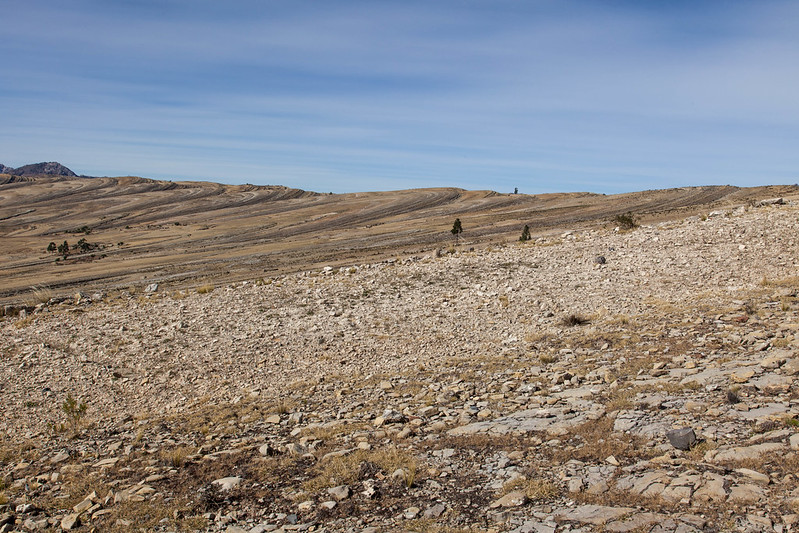 |
| Leaving the Marawa crater |
 |
| Bullocks to the trail |
In late morning, we reached a slab of rock tilted to about thirty degrees. A clear line of footprints from a large theropod dinosaur ran across one edge; a sauropod dinosaur had taken a slightly different route up the centre; some smaller theropods had scuttled around at random. The theropod prints were pristine and a group of French tourists posed as dinosaurs with their faces scrunched up, their hands extended as claws, and their feet in the prints. Guy was disgusted; these fossils may not be pristine for very much longer if many such groups come this way. Fortunately a group of Palaeontologists have spent a year studying the traces and taking casts so the record won't be lost.
From the dinosaur rock we headed down into the valley towards our vegetarian packed lunch (chicken - what else would you feed a vegetarian?). Power lines climbed the hillsides to the villages we passed on the way and I asked if they were new. "Yes," David told us, "they were installed a few months ago. There is a Presidential election this autumn." The electric lighting in Marawa was part of the same programme and equally new. So was the President trying to woo voters in the villagers? David thought so. "Yet the villagers don't have to pay any taxes," he added. We scented a slight note of being hard-done-by in the voice of this urban tax-payer.
One more question; what about health care in the villages? "A wheelbarrow is the best ambulance," David told us, "donkeys are too slow, so you need a wheelbarrow to get to the nearest town." Of course, of course. A wheelbarrow!
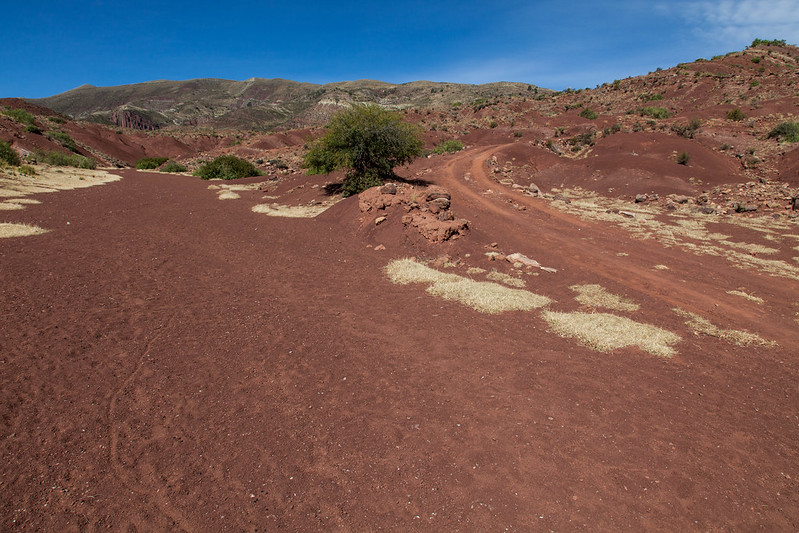 |
| Red soil at the end of the trek |
 |
| Climbing one of the new routes |
them any support to set new routes in the area - only to offer half-day beginners' climbing experiences to backpackers. The high points: the second ascent of a new route on excellent rock and the ability still to on-sight F6b (albeit on a top-rope!).
Susan, meanwhile, visited the 'Casa de la Constitucion' and other museums. Sucre is constitutionally the capital of Bolivia as everyone who has visited the town will know. ('Sucre, capital of Bolivia' screams from many buildings.) "It's still the capital," we were told, "even though the government sits in La Paz". I wonder how they feel about that in La Paz? Well, time to find out. We donned our down jackets and boarded the night bus, ready for a chilly ride to the city that, if the Sucrites are to be believed, isn't the capital after all. A few days previously this wouldn't have been possible as industrial action had locked the roads into La Paz but, with the strike over, we were free to continue on our way.


